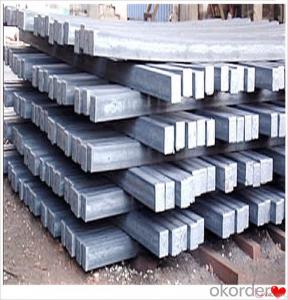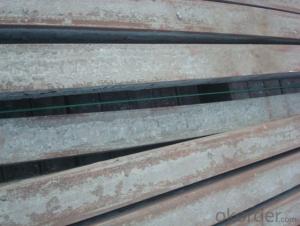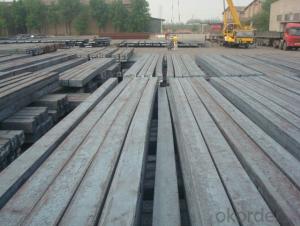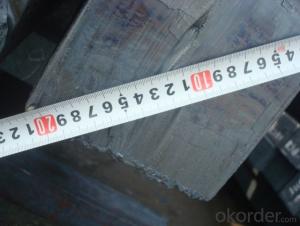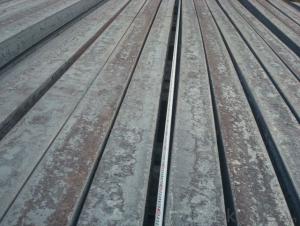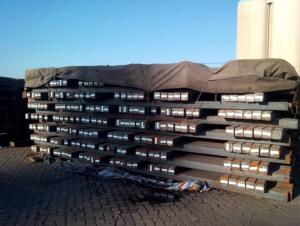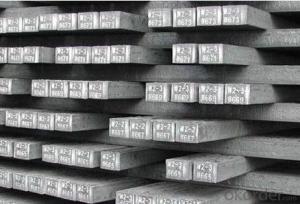Steel Billets Manufactured by Continue Casting
- Loading Port:
- Tianjin
- Payment Terms:
- TT OR LC
- Min Order Qty:
- 1000 m.t.
- Supply Capability:
- 10000 m.t./month
OKorder Service Pledge
OKorder Financial Service
You Might Also Like
Steel Billets Manufactured by Continue Casting
1.Structure of Steel Billets Manufactured by Continue Casting
Steel Billets Manufactured by Continue Casting is the raw material of all kinds of steel mill. Billet section of square, round, flat, rectangular and abnormity, etc Several, mainly related to shape of rolled products. Simple rolled section steel, choose cross section of square billet or rectangular billet. rolling The sector products such as flat steel, Angle steel, select the rectangular billet or slab. Had better profiled billet when production beams, channels, and in rolling process Lines and improve the yield. The raw material of round billet is the production of seamless tube.
2.Main Features of Steel Billets Manufactured by Continue Casting.
Steel Billets Manufactured by Continue Casting section size should meet the requirements of rolling deformation and finished product quality, but also roll strength and biting condition of restrictions. General steel Billet section height H. And the roll diameter D The ratio of the ( namely H/D) Should be less than or equal to zero 0.5 . Length of steel billet by finishing temperature, Rolling time and the length of the product Or times ruler. When heated too long accident prone to bump the furnace wall of steel, too short, furnace bottom utilization rate is not high, influence the heating furnace production. For the production Choose a variety of steel and steel billet, should consider the affinities of billet, as far as possible in order to improve the productivity of the roughing mill, simplify the stock management of workshop.
There are three shapes of the steel billets: square billet, slab, rectangular billet The Chinese billet, rectangular billet is mainly suitable for rolling hot rolled strip, building reinforced bar, Ordinary wire, high speed wire rod and various small profile. Of the slab are mainly used for rolling plate and hot coil sheet.
3. Steel Billets Manufactured by Continue Casting Images
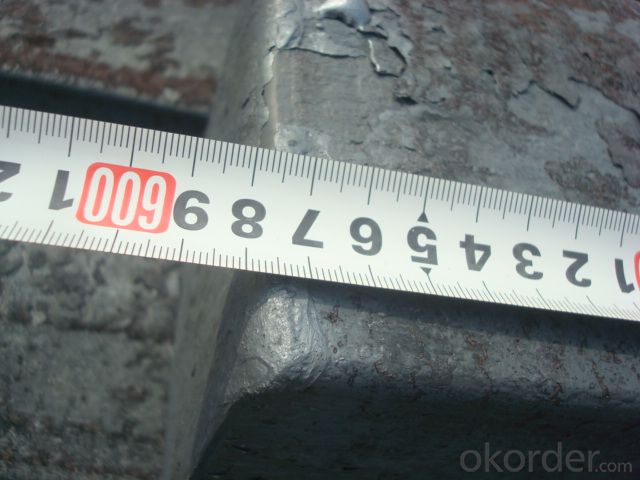
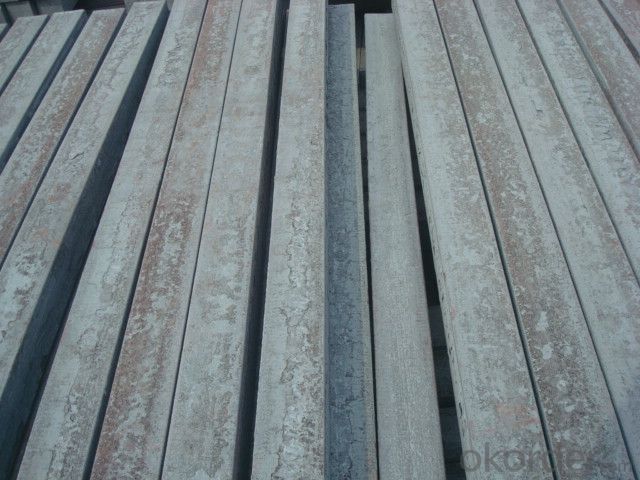
4. Steel Billets Manufactured by Continue Casting Specification
Steel Billets Manufactured by Continue Casting rolled steel, after processing can be used for mechanical parts, forging parts, processing all kinds of steel, steel Q345B channel steel, wire rod is the role of the billet. Steel billet is used in the production of semi-finished products, generally cannot be used directly for the society. Steel billets and steel are strictly divided into standard, cannot decide to whether the business enterprise of the final product, and according to unified standards to perform the whole society. Typically, billet and the steel is relatively easy to distinguish, but for some steel billet, and have the same specification and same steel purposes (such as rolling tube billet), whether can be used for other industries, whether through steel processing process, whether through a finished product rolling mill processing to distinguish
Material standard The editor Range of thickness: 150-240 - mm + / - 5 mm width range: 880-1530 - mm + / - 20 mm Length: 3700-10000 - mm + / - 500 - mm Cross-sectional size: 64 * 64; 82 * 82; 98 * 98; 124 * 124; 120 * 150; 152 * 164; 152 * 170 mm Length: 9000 mm Section of tolerance: billet: 1.0 + / - 2.0-1.0 + / - 1.0 mm slab: width: + / - 2.0 mm thickness: + / - 3.0 mm The length tolerance: + / - 200 mm Section diagonal tolerance: 3.5-8.0 MM Billet section size protrusions requirements: < 1242 mm, do not allow; > = 1242 mm, < = 2 mm 1242 mm, < = 3 mm Beheading (shear) extension deformation: < 1242 mm billet: no control; The slab: < = 15 mm Surface tilt: no more than billet section 0.1 Bending: every 1 m length is not more than 10 mm The distortion: length < = 5 m, < = 11. ; The length of the < = 7.5 M, < = 5. Material % 3 sp/PS chemical composition: C Mn Si S P
5.FAQ of Steel Billets Manufactured by Continue Casting
We have organized several common questions for our clients,may help you sincerely:
①How about your company?
A world class manufacturer & supplier of castings forging in carbon steel and alloy steel,is one of the large-scale professional investment casting production bases in China,consisting of both casting foundry forging and machining factory. Annually more than 8000 tons Precision casting and forging parts are exported to markets in Europe,America and Japan. OEM casting and forging service available according to customer’s requirements.
②How to guarantee the quality of the products?
We have established the international advanced quality management system,every link from raw material to final product we have strict quality test;We resolutely put an end to unqualified products flowing into the market. At the same time, we will provide necessary follow-up service assurance.
③What is the advantage of the continue Casting steel billet comparing to the die casting steel billet?And how is the process?
Compared with die casting, continuous casting has the advantages of: 1. To simplify the Steel billet The production process 2. Improve the metal yield 3. Improve the quality of the billet 4. Reduces the steel worker's labor intensity 5. Save energy and reduce consumption
Steel billet is produced by the method of through three processes: It is through the steelmaking system of continuous casting equipment, directly by the molten steel pouring into billet; The second is the steelmaking system in the production of steel ingot casting billet through system of steel rolling rolling equipment or processing of steel semi-finished products; Three is the steelmaking system production of steel ingot by forging the semi-finished product processing equipment.
- Q: What are the main factors affecting the tensile strength of steel billets?
- The main factors affecting the tensile strength of steel billets include the chemical composition of the steel, the heat treatment process, the presence of impurities or defects in the material, the grain size and orientation, and the processing conditions used during manufacturing.
- Q: What are the main factors affecting the machined surface quality of steel billets?
- The main factors affecting the machined surface quality of steel billets include the choice of cutting tool, cutting parameters such as cutting speed, feed rate, and depth of cut, the composition and properties of the steel billet, and the presence of any surface defects or impurities.
- Q: How are steel billets used in the production of conveyor systems?
- Steel billets play a crucial role in the production of conveyor systems, as they are utilized to form the main structural framework. To achieve the desired shape, the billets undergo a process called hot rolling, which involves heating them and passing them through a series of rollers. This results in the transformation of the billets into long, slender bars with a consistent cross-sectional shape. Once shaped, the steel billets are further processed to create various components for the conveyor system. These components include conveyor frames, support beams, brackets, and other structural elements that provide stability and strength to the system. Steel billets are well-suited for this purpose due to their high tensile strength and durability. Apart from structural components, steel billets are also utilized in the production of conveyor rollers. These rollers are essential for facilitating the movement of materials along the conveyor system. The steel billets are machined and formed into cylindrical shapes, which are then fitted with bearings to ensure smooth rotation. The rollers are then installed at regular intervals along the conveyor, enabling efficient and continuous material handling. Furthermore, steel billets are often employed in the manufacturing of conveyor belts. The billets are processed into thin sheets, which are then coated with materials such as rubber or fabric to provide grip and durability. These belts bear the load of the materials being transported and are designed to withstand heavy usage and harsh environments. In conclusion, steel billets are vital in the production of conveyor systems, providing essential structural support as well as components like rollers and belts. Their strength, durability, and versatility make them an ideal choice for constructing conveyor systems that can handle heavy loads and ensure efficient material handling in various industries.
- Q: How are steel billets used in the manufacturing of railway equipment?
- Steel billets play a crucial role in the production of railway equipment. These semi-finished steel products serve as vital raw materials for manufacturing railway components like rails, wheels, axles, and structural parts. To initiate the manufacturing process, the steel billets undergo heating in a furnace until they reach the desired temperature for hot rolling. This heating procedure enhances the malleability and ductility of the steel, facilitating its shaping into the desired railway equipment components. Once the steel billets attain the appropriate temperature, they are then passed through a series of rolling mills. This stage subjects the billets to immense pressure, causing them to elongate and change shape. Known as hot rolling, this process is pivotal in transforming the steel billets into long, slender sections like rails or axles. Following the hot rolling stage, the railway components undergo further processing to achieve the desired shape and specifications. For instance, rails may undergo head hardening to enhance their wear resistance and strength. Similarly, wheels and axles may undergo additional heat treatment processes to improve their mechanical properties and durability. It is essential to note that the quality of the steel billets utilized in the manufacturing process significantly affects the overall quality of the railway equipment. The steel employed should possess specific characteristics such as high strength, toughness, and resistance to wear and fatigue, ensuring the safety and reliability of the final products. To summarize, steel billets are an indispensable component in the manufacturing process of railway equipment. Through hot rolling and subsequent processing, these billets are transformed into various components that form the backbone of rail systems. The quality of the steel billets directly impacts the performance and longevity of the final railway equipment, making them a critical element in the industry.
- Q: How do steel billet prices fluctuate in the market?
- Steel billet prices fluctuate in the market due to various factors such as supply and demand dynamics, global economic conditions, raw material costs, and geopolitical events. Changes in demand from industries like construction, automotive, and manufacturing can drive prices up or down. Additionally, fluctuations in the cost of iron ore, scrap metal, and energy can impact the production cost of steel billets and consequently affect their market prices. Furthermore, trade policies, currency exchange rates, and political stability can also influence the market and lead to price volatility.
- Q: How are steel billets used in the manufacturing of pipeline systems?
- The manufacturing process of pipeline systems relies heavily on steel billets. These billets are essential as they serve as the primary raw material for shaping and forming various pipeline components, including pipes, fittings, and connectors. To initiate the manufacturing process, the steel billets undergo heating to a specific temperature, making them malleable and easier to manipulate. Subsequently, they pass through a series of rolling mills, gradually taking on the desired form and size. This hot rolling process entails applying high pressure to elongate and shape the billets into long cylindrical pipes. Once the initial shaping is complete, the pipes undergo additional processes, such as heat treatment, cutting, and welding, to ensure their strength, durability, and dimensional accuracy. The steel billets used in this process are of utmost importance as they provide the necessary raw material for producing high-quality pipes that can withstand the demanding conditions of pipeline systems. Furthermore, steel billets also play a crucial role in the manufacturing of various pipeline fittings and connectors. By employing techniques like forging, machining, or casting, these billets are shaped and formed into fittings like elbows, tees, reducers, and flanges. These fittings are essential for connecting and joining pipes together, facilitating the proper flow and distribution of fluids or gases within the pipeline system. In conclusion, steel billets are indispensable in the manufacturing of pipeline systems. They serve as the raw material for pipes, fittings, and connectors, guaranteeing the production of durable and high-quality components. Through processes such as hot rolling, heat treatment, cutting, and welding, these billets meet the stringent requirements of pipeline systems.
- Q: Are steel billets used in the production of furniture?
- No, steel billets are typically not used in the production of furniture. Steel billets are semi-finished products made from molten iron that are later shaped into various forms, such as bars, rods, or sheets, through a process called hot rolling. While steel may be used in the manufacturing of furniture, it is usually in the form of finished products such as steel tubing, steel sheets, or steel frames. These finished steel products are more commonly used in the construction of furniture, particularly in industrial or modern designs. The use of steel in furniture production provides durability, strength, and a sleek aesthetic. However, the steel used in furniture manufacturing is usually obtained through different processes than the production of steel billets.
- Q: What are the different methods of steel billet surface treatment?
- The industry commonly utilizes several methods for steel billet surface treatment, aiming to enhance properties such as corrosion resistance, hardness, and aesthetics. Some of the most widely used methods include: 1. Pickling and Passivation: By utilizing acid solutions, impurities and oxide layers are removed from the steel surface. Passivation follows pickling to create a protective layer against future corrosion. 2. Shot Blasting: This mechanical treatment involves bombarding the billet surface with high-speed steel shots or grits, effectively eliminating scale, rust, and contaminants to achieve a clean and uniform surface. 3. Hot-Dip Galvanizing: Steel billets are immersed in molten zinc, which forms a protective coating on the surface. This method provides exceptional corrosion protection, making it suitable for outdoor applications. 4. Electroplating: A thin layer of metal, such as chrome or nickel, is deposited onto the steel surface using an electric current. This process enhances appearance, corrosion resistance, and wear resistance. 5. Powder Coating: A dry powder is applied to the steel surface and then cured through heat, resulting in a durable and visually appealing finish. This method is popular for aesthetic purposes. 6. Painting: The steel surface is cleaned, primed, and applied with a suitable paint system. This method enhances appearance and provides protection against corrosion and environmental factors. 7. Nitriding: Nitrogen diffuses into the steel surface through a heat treatment process. This method improves billet hardness, wear resistance, and fatigue strength. These are just a few of the available methods for steel billet surface treatment. The choice of method depends on specific application requirements, desired properties, and budget considerations.
- Q: What is the active carbon. What is the difference with the charcoal?
- The chemical activation method. The activator of discharged gas, or by activating agent impregnated material, after the high temperature treatment can be activated carbon. The activated carbon has a microcrystalline structure, crystallite alignment completely irregular. The micro crystal (radius of less than 20, a: = 10-10 m), transition hole (radius 20 ~ 1000), big hole (radius of 1000 ~ 100000), so it has great inner surface, the surface area of 500 to 1700 meters / 2 grams.
- Q: What are the properties and characteristics of steel billets?
- Steel billets are semi-finished metal products that are typically used in the production of various steel products. They possess several properties and characteristics that make them suitable for such applications. Firstly, steel billets have a high strength-to-weight ratio, which makes them incredibly strong and able to withstand heavy loads. This strength is derived from the carbon content in the steel, which enhances its structural integrity. Secondly, steel billets have excellent heat conductivity, allowing for efficient heat transfer during various manufacturing processes. This property makes them ideal for applications that involve high-temperature operations, such as forging and rolling. Moreover, steel billets possess good machinability, meaning they can be easily shaped and formed into desired products. This property is essential in the manufacturing industry, as it allows for the production of complex and customized steel components. Steel billets also exhibit excellent ductility, which enables them to be stretched and molded without breaking. This characteristic is crucial in applications where the steel needs to be bent or formed into various shapes. Additionally, steel billets have a high resistance to corrosion, making them suitable for use in outdoor or corrosive environments. This property ensures the longevity and durability of steel products made from billets. Furthermore, steel billets can be easily welded, allowing for the fabrication of large and complex structures. Their weldability makes them versatile and adaptable to different construction and manufacturing needs. Lastly, steel billets have a consistent and uniform composition, ensuring high-quality and reliable steel products. This consistency is achieved through precise manufacturing processes and strict quality control measures. In conclusion, steel billets possess several properties and characteristics that make them highly desirable in the production of steel products. Their high strength, heat conductivity, machinability, ductility, corrosion resistance, weldability, and consistent composition make them essential in various industries, including construction, automotive, and manufacturing.
Send your message to us
Steel Billets Manufactured by Continue Casting
- Loading Port:
- Tianjin
- Payment Terms:
- TT OR LC
- Min Order Qty:
- 1000 m.t.
- Supply Capability:
- 10000 m.t./month
OKorder Service Pledge
OKorder Financial Service
Similar products
Hot products
Hot Searches
Related keywords












